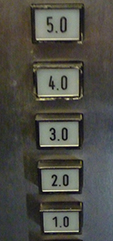
Fachbereich 4
Internationaler Bachelor Studiengang
Internationale Medieninformatik (Bachelor)
Informatik 3
Winter Term 2023/24

Info 3: Informatik III
Modern Software Engineering

|
HTW Berlin Fachbereich 4 Internationaler Bachelor Studiengang Internationale Medieninformatik (Bachelor) Informatik 3 Winter Term 2023/24 |

|
|
Info 3: Informatik III Modern Software Engineering |
||
|
Lab 2: User Stories and Use Cases
|
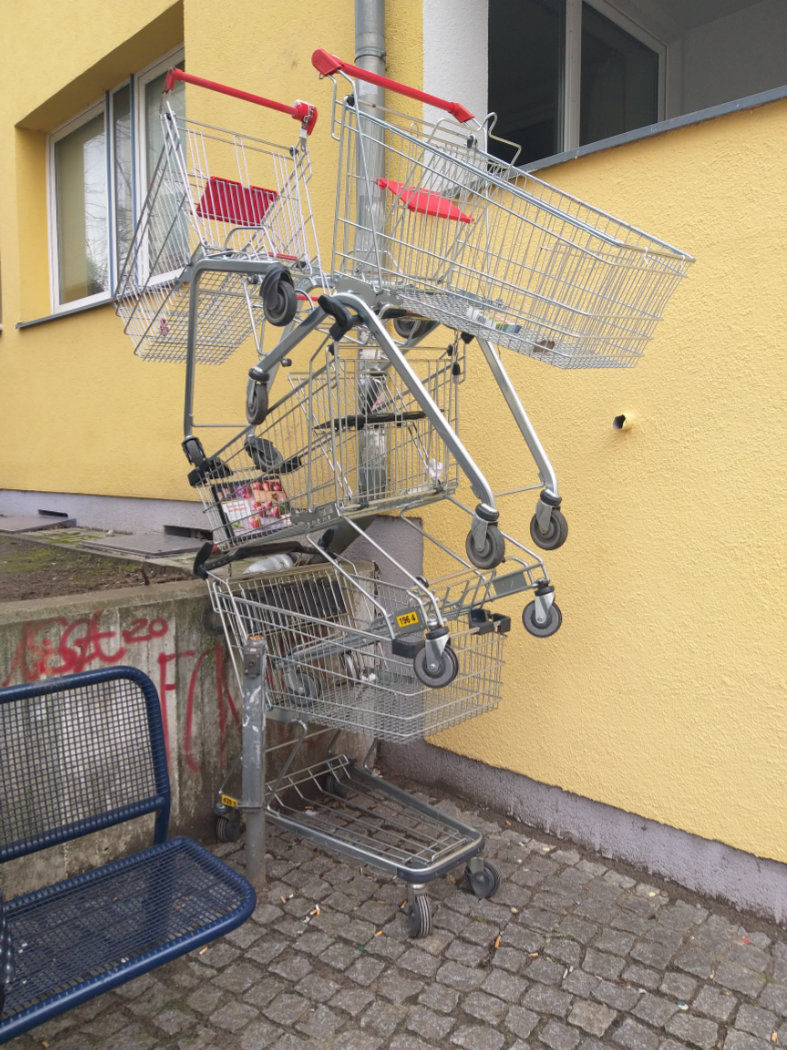 |
Your job Your job over the course of the
semester will be to design a system for helping grocery
store owners find the shopping carts that selfish
customers have taken from the store and left somewhere in
the neighborhood. We will not be implementing the system,
just designing it. You are, however, free to implement
this over the break and make money off of the idea if you
can. The company that sells the shopping carts is already
working
hard on the problem. You need to form a team of three
to four people. You will be working together for the rest
of the semester. Choose a team name, if you wish. Printing
team T-Shirts is optional. This exercise spans two weeks. The first week you need to form your team and start by preparing user stories. Begin thinking about the project, but don't start your diagrams until the second week. Lab reports are only due for the second week, the day before the next exercise. Each team will submit a core report that should be the same for all members of the team and includes a personal reflection of each team member on what they learned in this exercises and states the amount of time (in and out of class) spent on the exercise. |
User Stories
A user story
is the result of the first steps a developer takes in trying to
understand the requirements that a system needs to fulfill. It is
rather informal, although there is a basic structure to the
stories. Natural language is used, and they are all written from
the perspective of the user, not the developer. We are not
thinking in solutions yet, but trying to understand the problem.
There are a few templates that are traditionally used to write user stories.
As a <role> I can <capability>, so that <receive benefit>
In order to <receive benefit> as a <role>, I can <goal/desire>
As <who> <when> <where>, I want <what> because <why>
They represent the business case for the development. There is still a lot missing, but they are very useful for getting a discussion going, which is why some people call them a "promise for a conversation".
Use cases and Scenarios
Use cases are a scenario-based technique for requirements elicitation. They were first proposed by Ivar Jacobson as part of his Objectory methodology. There are many different variations on use cases floating around, but the basic idea is to record the situation in which something happens in the system that involves interaction with the outside world. The actors on the outside are named, and a formalized method is used to explain what should happen, and describe any exceptional circumstances which might arise.
In a scenario you describe a concrete use of the proposed system, using the names of a proposed user. In the use case we then abstract away from the concrete situations given in the scenarios and try and describe a more general case. We have user roles and system functionality, which are depicted in diagrams as little stick figures and circles, respectively:
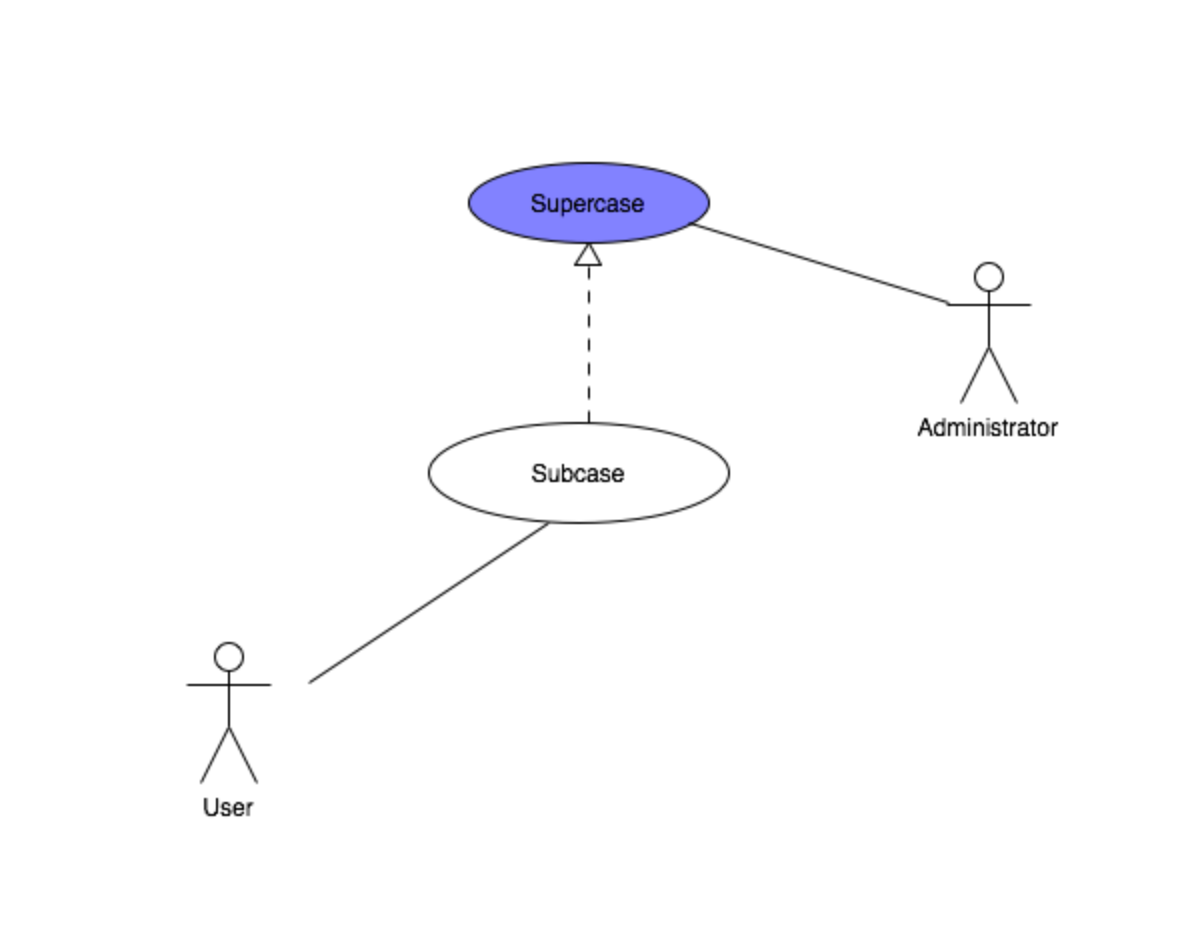
| An actor is something or someone that interacts with the target system to produce an observable result. There are active and passive actors. They are usually drawn with a stick figure, although I sometimes enjoy using a stick-woman figure just to be ornery. |  |
A use case is an instance of how an actor would use a software system or a service offered by the system. More than one actor can participate in a use case. We draw use case diagrams to visualize the use cases and write out the use cases using templates, such as the one given in Wikipedia. Use case diagrams are decorated with the name given to the use case.
A scenario will typically describe the sequence of concrete activities that happen when a user is interacting with the proposed system. It is a detailed, step-by-step description of observable behaviors—that is, it does not describe the internal workings of the machine, but what a user can observe from the outside. We are not worried right now about how it will be done on the inside, but instead just want to see if the use of the system makes sense.
We can branch inside a scenario using an if statement and can repeat steps using a while statement. A scenario will not have exceptional conditions. If it is describing one such exceptional interaction, then it explains each step of what happens. A scenario also does not extend another scenario—it just describes what happens in this concrete instance.
We give names to scenarios and use cases, so that we can talk about them. The name should somehow be connected to the use case it is describing. Then we describe any precondition that must hold before the scenario can commence. For example: The user has a valid EC card. Then the sequence of steps is listed, followed by a postcondition describing what must hold at the end of the scenario. For example, the account linked to the EC card has been debited by 100 Euros and the user now has 100 Euros cash in her hands and the card is now marked as having been used on the current day.
|
Name |
ATM Cash Withdrawal |
| Precondition | Emmy
has an EC card with a readable chip & the EC card is valid & the EC card is linked to an account with this bank |
| Sequence of steps |
|
| Postcondition |
Emmy
is in possession of her card and 150 Euros & |
There are also scenarios sometimes referred to as "secondary scenarios" which describe alternate paths. They have their own name, the name of the scenario to which they are referring, and a description of the problem or alternative faced.
| Name | Invalid PIN |
| Scenario based on | ATM Cash Withdrawal |
| Exception | Repeat steps 7 and 8 twice if the user enters in an invalid PIN. If the third time still does not give the correct PIN, then retain the card. |
A number of scenarios are usually collected and abstracted into a Use Case and expressed graphically by a Use Case Diagram. The elements of a Use Case often include:
You should realize that every author and every company have their own ways of describing Use Cases, but usually each of these aspects are addressed.We will be using the structure given here.
Our case study
| You have surely seen
them, they are all over Oberschöneweide and pretty much
everywhere else in the city: abandoned shopping carts. Lazy customers steal them from grocery stores or hardware stores to cart their purchases home, usually because they don't have a car or bought too much to carry. Instead of returning the shopping cart when it is empty so that others can use them to shop, they are often abandoned in front of the house on the sidewalk. They collect garbage thrown in by passers-by or just stand in the rain. Youth use them for joy-riding. Sometimes brave souls return the carts, often getting nasty looks from patrons waiting outside for a free cart, as they assume the honest returner is the thief. Our case study is to propose a solution! Random people should have an app on their phones so that they can take a picture of an abandoned cart, automatically obtain the geo-location, and have it stored in a database. If people register, they should be able to collect some sort of stars or points. A leaderboard will display the top returners of the month. Of course, there will be multiple people informing about the same cart, and often there are multiple carts at the same location (just walk down the Edisonstr. from Aldi on pretty much any random day to have a look). And of course, there will be carts from different stores at the same location. |
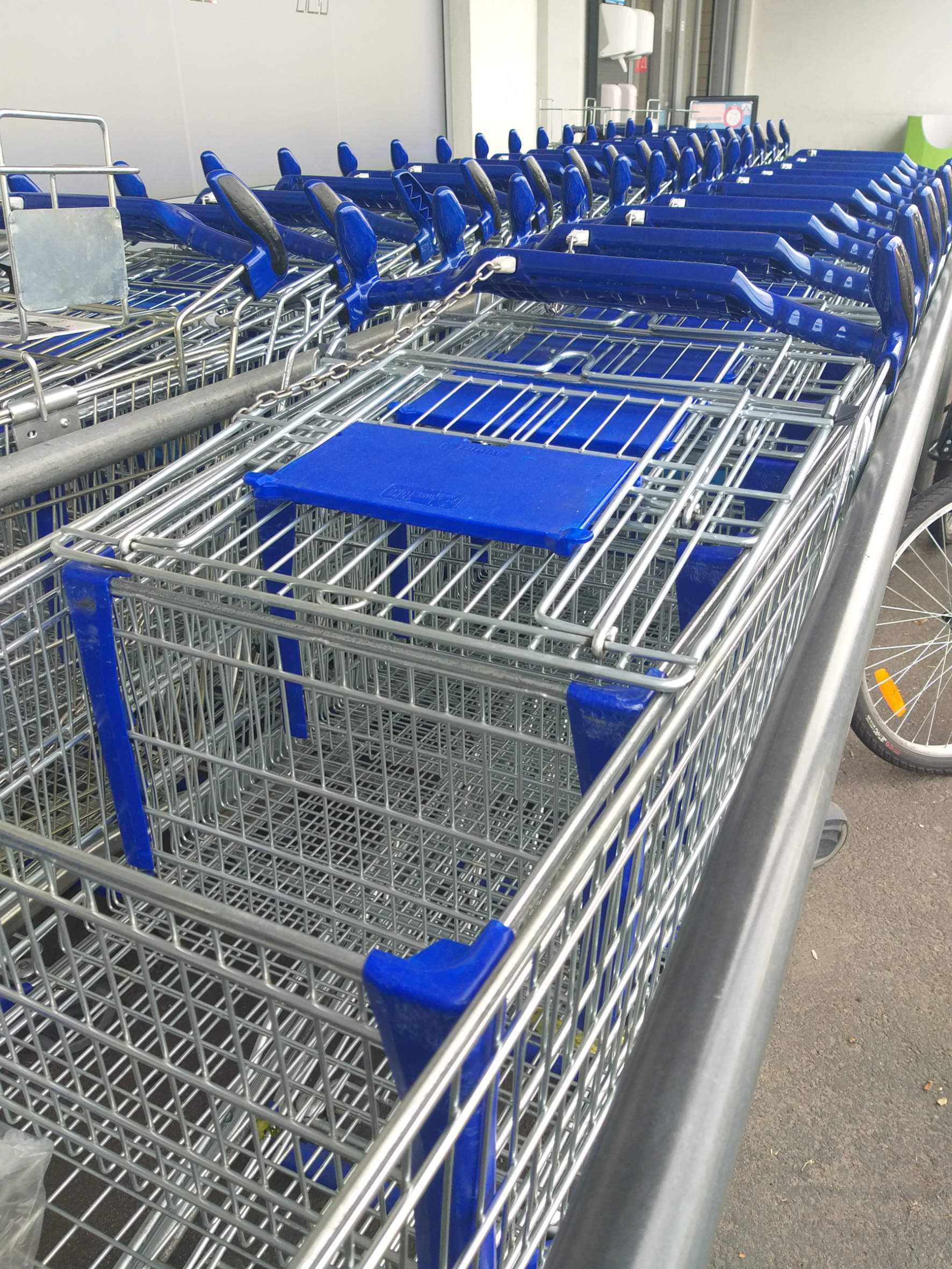 |
| Grocery store owners
can register for the service, too. They should be able to
specify a radius around their store that they want to
search for carts from their store. After all, the things cost a
lot of money! They only want to find their own
carts, not those of other stores. They want to print a
list of nearby carts and have them located on a map so
that they can send someone out to collect them when there
not much to do. Even though the
system is planned for Germany, there should be a
possibility of using other languages, at least English,
Turkish, and Polish, with the system. Administrators are responsible for setting up and maintaining the system. And there are perhaps statistics that need to be kept. |
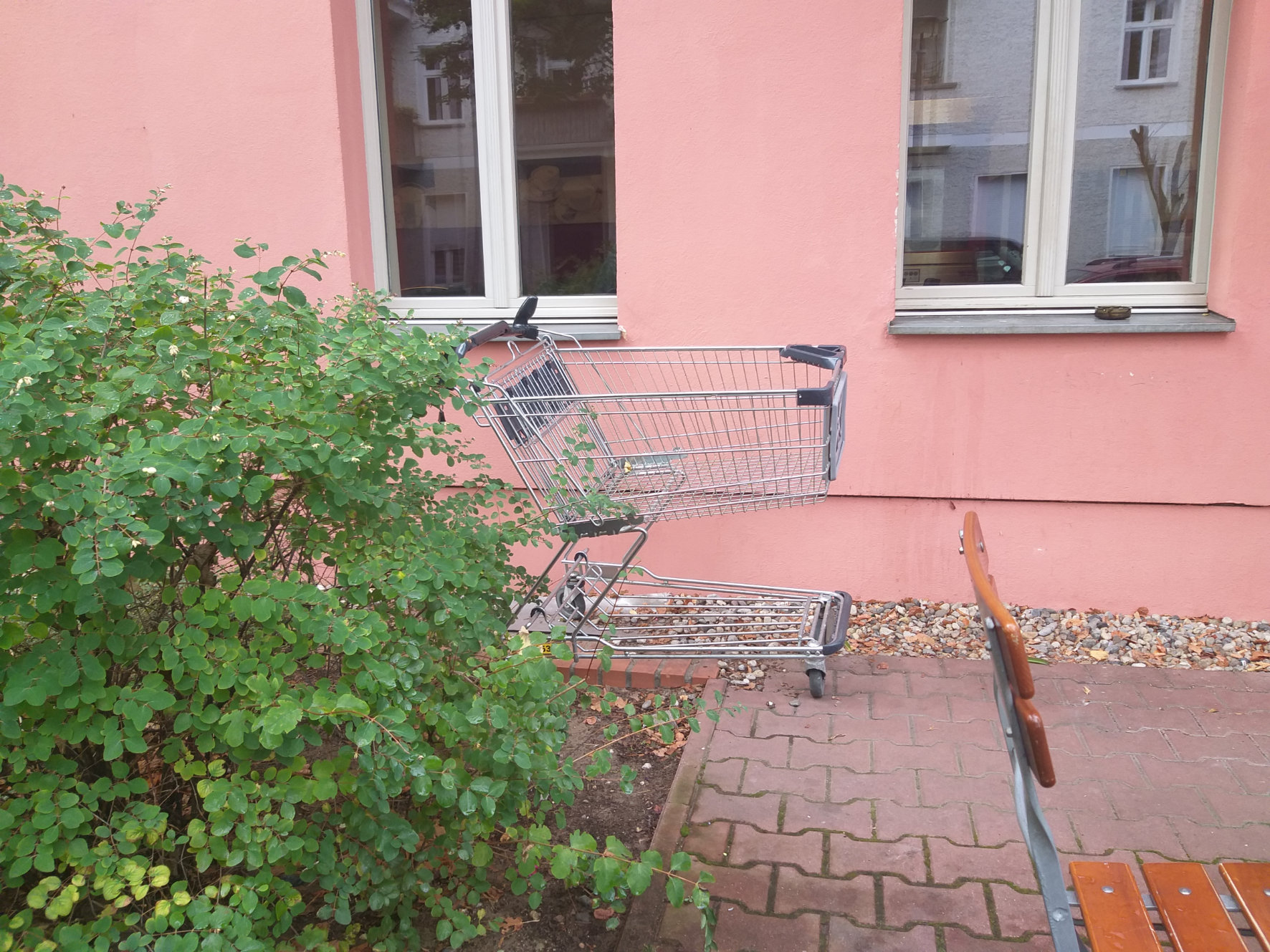 |
Exercises
There is a
forum for submitting exercises in Moodle—please have your
exercises online here by 23.59 the day before the next
exercise. Please include all materials (scenarios, use cases and
use case diagrams) in one PDF and don't forget
to put the names of each person involved on the report. Each
person needs to include a personal reflection on what they
learned and how difficult they found the exercise. Everyone in
the group submits the same PDF. Alternate formats such as ZIP
files will be considered not submitted.